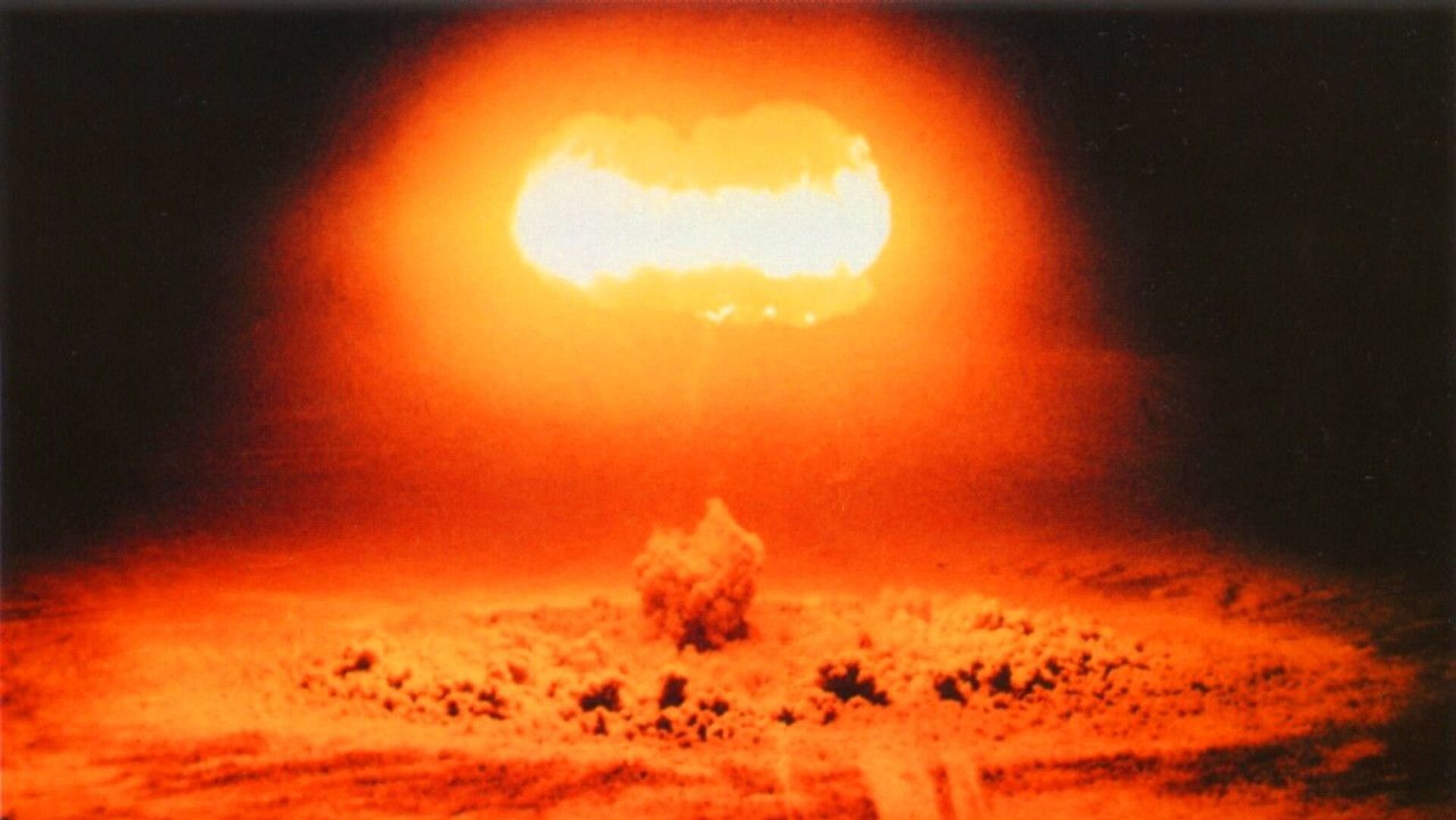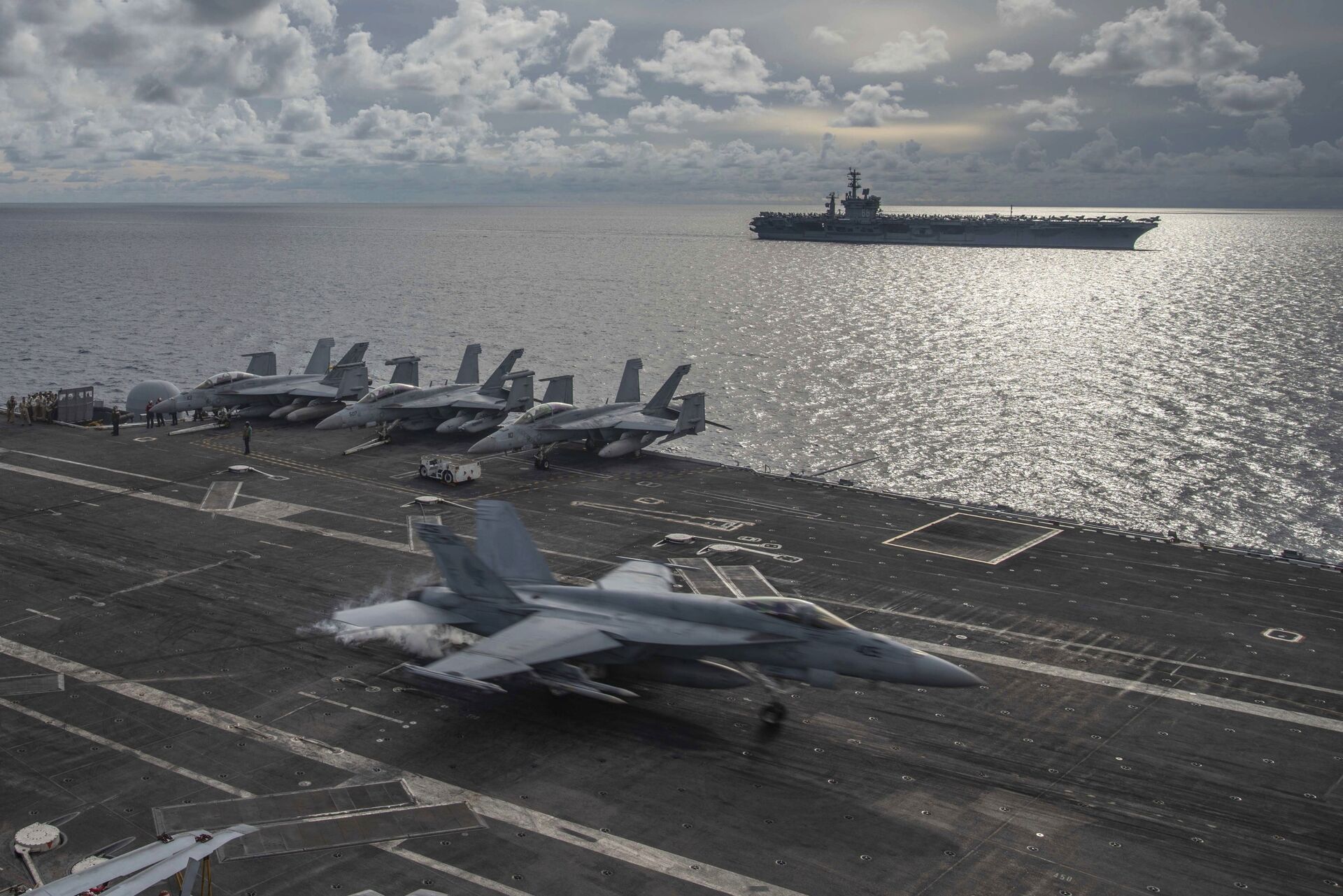China Set Out to Expand Nuclear Triad Amid Fears US Would Strike Before 2020 Election, Report Says
19:55 GMT 03.11.2021 (Updated: 12:44 GMT 13.04.2023)

© Photo : Nuclear Weapon Archive
Subscribe
A new Pentagon report highlights how heightened US aggression has fueled fears in the People’s Republic of China (PRC) that war is likely in the near future, pushing them to more rapidly expand their nuclear arsenal and strike capabilities.
Amid publication in September of a new book about the final days of the Trump administration, it soon became apparent just how afraid military officials in both the US and China were that then-US President Donald Trump might attempt to stage an incident in the South China Sea that would bring the two countries into war and allow him to stay in power, either by hook or by crook.
However, in the Defense Department’s annual report to Congress on Chinese military developments, the department notes that American posturing in recent years has had a profound effect on Beijing’s strategic thinking, driving them to expand their nuclear capabilities at an increasing rate.
‘October Surprise’
“China’s leaders’ perceptions of intensifying strategic competition driven by structural changes in the international system and an increasingly confrontational United States is consistent with the Party’s long-held opinion - based on its view of competition between systems - that the United States seeks to prevent China’s rejuvenation,” the report states. “Given this belief, the accrual of the PRC’s comprehensive national power sets conditions for the PRC’s greater willingness to confront the United States.”
“In the second half of 2020, the PRC perceived a significant threat that the United States would seek to provoke a military crisis or conflict in the near-term. These erroneous concerns were accompanied or fueled by widespread speculation in PRC media that the United States would deliberately instigate a conflict with the PRC in the South China Sea. This speculation accompanied intensified warning messaging in PRC state media, large-scale military drills, heightened readiness, and additional deployments,” the report continues.

USS Ronald Reagan (CVN 76), as USS Nimitz (CVN 68) in the South China Sea
© AP Photo / Mass Communication Specialist 2nd Class Samantha Jetzer
It goes on to mention that twice in late October 2020, just days before the US election that Trump lost to Biden, Chairman of the Joint Chiefs of Staff Gen. Mark A. Milley and then-Defense Secretary Mark Esper both reached out to their Chinese counterparts to try and assuage Beijing’s fears. Days earlier, the People’s Liberation Army had put all five commands on high alert due to fears of a so-called “October Surprise” by Trump.
A subsequent congressional hearing in late September revealed that Trump’s continued contestation of the election kept tensions with China high, with Milley placing a second call in the wake of the January 6, 2021, insurrection at the US Capitol to again reassure Beijing that no strike was imminent. Milley also coordinated with US intelligence leaders, including at the CIA and NSA, to get advance warning about any potential coup by Trump, and he instigated a snap review of the nuclear launch process with his senior generals to ensure Trump didn’t try and order an “illegal” launch, he said.
Need for a Triad
However, American antagonism of China didn’t begin in late 2020, it has built over several years, since early in the Trump administration Washington’s strategic orientation began to shift away from the War on Terror and toward “great power competition” with Russia and China.
Throughout Trump’s presidency and into US President Joe Biden’s, the US has staged provocative actions in the South China Sea and near Taiwan, including dramatically increasing support for Taiwan’s military, and opened an all-out economic and ideological offensive aimed at demonizing China and cutting off its political and economic growth.
The Pentagon’s report notes that it was in October 2019 that the PLA Air Force (PLAAF) introduced a new version of his Xi’an H-6 bomber, the H-6N, that provides “a platform for the air component of the PRC’s nascent nuclear triad.”
The massive bomber, a heavily modified version of Tupolev’s Tu-16 strategic bomber built for the former Soviet Union, has exterior missile mounts and an indentation under its belly for carrying an air-launched ballistic missile (ALBM). The unusual design allows for the PLAAF to deploy nuclear weapons from an aircraft without having to design a new nuclear gravity bomb, which China has never seen as a valuable part of its small nuclear deterrent.

A Chinese Xian H-6N bomber carrying what is reported to be a hypersonic variant of the Changjian cruise missile family
When combined with its submarine-launched ballistic missiles and land-based intercontinental ballistic missiles, the H-6N and its ALBMs give China a “nuclear triad,” or a guaranteed second-strike capability that only Russia and the United States also enjoy.
Expanding Nuclear Stockpile
According to the Pentagon, the PRC is expanding its nuclear warhead stockpile, as well. At present, China only maintains a small collection of between 200-350 nuclear warheads sufficient to deter an attack, and has implemented a no-first-use policy to further clarify that the weapons are purely defensive. However, US pressure has accelerated expansion of that force, with the Pentagon projecting perhaps a doubling of China’s stockpile to 700 warheads by 2027 and 1,000 by 2030.
By comparison, the US and Russia have several times the number of warheads as China. According to a report released last month by the US State Department, as of September 2020, the US had about 3,750 active nuclear warheads and another 2,000 in storage. Russia is estimated to have a total of 6,250 warheads, of which about 1,600 are deployed.
While the US is dismantling older warheads, it’s also pouring more than $1.2 trillion into modernizing its nuclear strike force, which includes several new lines of nuclear warheads. In July, the first W88 Alt 370 thermonuclear gravity bomb rolled off the proverbial assembly line at the Pantex Plant in northern Texas, while the small W76-2 warhead was produced in recent years and several other overhauls are planned.
Other nuclear-armed states include Pakistan, India, France, the UK, Israel, and the Democratic People’s Republic of Korea, all of which maintain only small arsenals.


